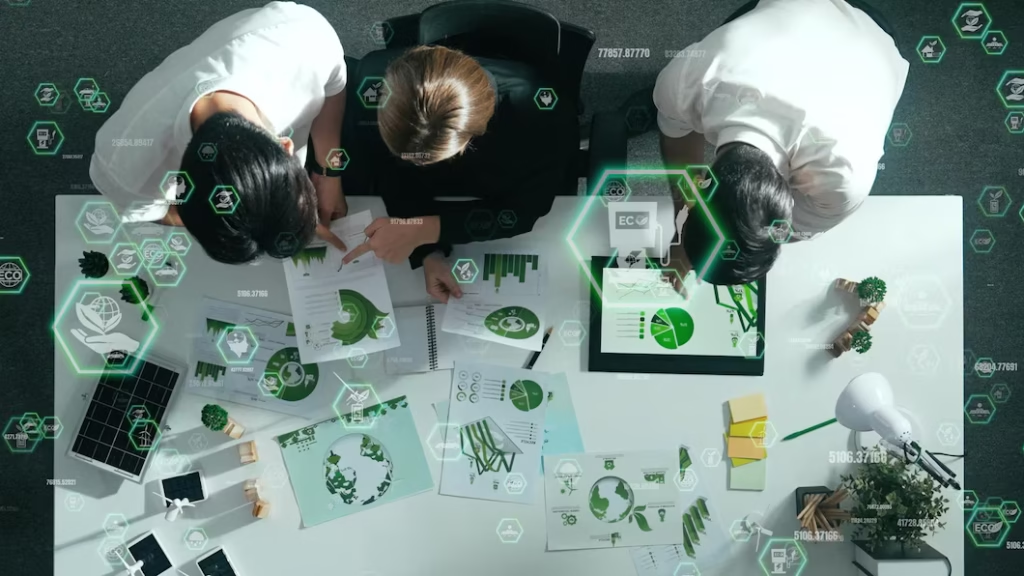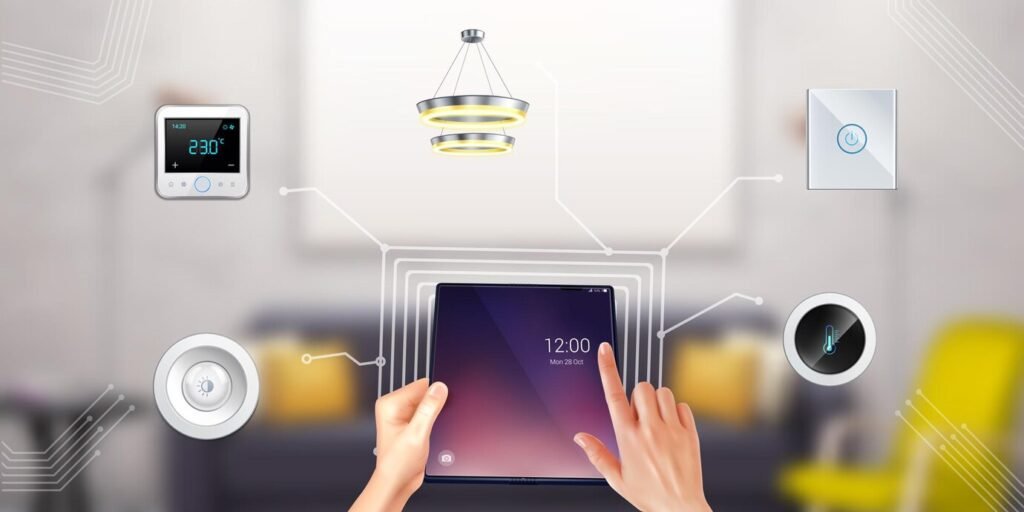Introduction
zero-waste tech is an extraordinary methodology pointed toward killing waste by utilizing innovation that upholds the standards of decrease, reuse, and reusing. The thought is to make frameworks where items and materials are ceaselessly reused and reused, limiting natural effect. In contrast to conventional straight frameworks, where items are made, utilized, and discarded, zero-squander innovation underscores a round model waste reduction where waste is limited and assets are saved. By coordinating these standards, organizations and buyers can essentially diminish how much waste that winds up in landfills or adds to contamination.
The reception of zero-squander rehearses is essential recycling innovations as the world appearances developing difficulties connected with environmental change, asset consumption, and waste administration. With innovation turning into a basic piece of day to day existence, zero-squander developments in this area are driving the way in decreasing the ecological effect of tech items.
Waste Reduction A Key to Sustainable Living
Waste reduction is a basic part of ecological maintainability, zeroing in on limiting how much waste created and its effect in the world. By taking on squander diminishing practices, people, organizations, and networks can monitor assets, lower carbon impressions, and decrease landfill squander. One of the best techniques is the execution of the “decrease, reuse, reuse” standard, which urges buyers to buy less dispensable items, reuse things where conceivable, and reuse materials proficiently.
In the home, this can incorporate settling on items with negligible bundling, picking reusable compartments rather than single-use plastics, and fertilizing the soil natural waste. Organizations can contribute by smoothing out creation cycles to decrease squander, planning items with longer life expectancies, and embracing maintainable bundling choices. States and neighborhood specialists assume a part by advancing waste decrease programs, giving reusing offices, and empowering round economy rehearses. By and large, squander decrease monitors important assets as well as encourages a culture of supportability that helps the climate and people in the future.
Eco-Friendly Solutions Paving the Way for a Sustainable Future
Eco-accommodating arrangements are major for watching out for the normal challenges we face today, offering pragmatic choices that decrease underhandedness to the planet. These arrangements length different ventures, from environmentally friendly power to economical assembling, and are intended to limit squander, preserve assets, and diminish carbon impressions. For instance, sunlight based and wind power are progressively famous eco-accommodating energy sources that assist with lessening dependence on petroleum derivatives and reduction ozone harming substance outflows.
In development, eco-accommodating arrangements like energy-proficient structures, practical materials, and green rooftops assist with limiting natural effect and upgrade energy protection. In day to day existence, eco-accommodating items like reusable sacks, compostable bundling, and water-saving machines add to lessening waste and safeguarding regular assets. Moreover, organizations are embracing economical practices, for example, obtaining unrefined substances capably, decreasing water utilization, and executing waste decrease systems. These eco-accommodating arrangements are valuable for the climate as well as assist with making better, more supportable networks. By embracing these practices, we can lessen natural mischief and push toward a greener, more economical future.
Recycling Innovations Transforming Waste into Valuable Resources
Reusing advancements are changing the manner by which we supervise waste, turning materials that would some way or another or one more end up in landfills into huge resources. One of the most thrilling improvements is the progression in e-squander reusing, where organizations are tracking down better approaches to recuperate valuable metals like gold, silver, and copper from disposed of gadgets. New advancements, similar to engineered reusing and mechanical orchestrating systems, have dealt with the capability and sufficiency of reusing processes, considering the extraction of materials that were once irksome or challenging to recuperate. Additionally, advancements in plastic reusing, similar to the improvement of state of the art substance reusing techniques, are enabling the reuse of plastics that were ahead of time non-recyclable.
This recycling innovations separates plastic waste into its compound parts, which can then be utilized to make new items, lessening the requirement for virgin plastic creation. Moreover, the ascent of biodegradable and compostable materials has moved the concentration from garbage removal to asset recuperation. As these developments keep on advancing, they vow to assume a urgent part in limiting waste, diminishing contamination, and supporting the change to a more round economy.

Zero-Waste Tech The Future of Sustainable Innovation
Zero-waste tech is an arising field that spotlights on making practical, harmless to the ecosystem arrangements in the tech business. As innovation keeps on developing, the natural effect of e-squander and unnecessary asset utilization turns into a developing concern. Zero-squander tech expects to decrease squander by planning items with longer life expectancies, advancing the reuse of materials, and empowering reusing. Organizations are presently investigating ways of planning gadgets that can be effortlessly dismantled,
with parts that can be reused or reused. For instance, measured telephones and workstations, which permit clients to overhaul individual parts as opposed to supplanting the whole gadget, are driving advancements here. Furthermore, progressions in biodegradable hardware and the improvement of practical creation strategies assist with limiting the carbon impression of tech items. With the tech business being one of the biggest supporters of worldwide waste, zero-squander drives can possibly radically diminish ecological effect while empowering a more round economy. By embracing these standards, the tech world can make ready for a future that offsets development with supportability.
The Environmental Impact of Waste and Technology
The ascent of innovation has without a doubt worked on the personal satisfaction for individuals all over the planet, however it has likewise made enormous waste difficulties. The tech business is one of the greatest creators of waste, particularly as electronic waste (e-waste). According to the Bound together Nations, more than 50 million measurement bunches of e-waste are made reliably, and under 20% of this waste is fittingly reused. E-waste contains significant materials, similar to gold, silver, and copper, but improper evacuation can incite normal damage, including debasement of water sources and air defilement.
Notwithstanding e-squander, the tech business likewise adds to asset consumption. Fabricating tech items requires tremendous measures of unrefined components, including metals, plastics, and uncommon earth components, large numbers of which are mined in ecologically harming ways. The energy utilized underway, transportation, and removal additionally adds to the business’ carbon impression. As interest for new gadgets and devices keeps on rising, tending to the natural effect of these innovations has turned into a worldwide need.
Key Innovations in Zero-Waste Technology
To relieve the ecological difficulties presented by the tech business, a few creative zero-squander innovations are being created. These advancements mean to lessen squander at each phase of the item lifecycle — from creation to removal.

Modular and Repairable Electronics
Perhaps of the most significant development in zero-squander innovation is the shift towards measured gadgets. Specific contraptions are arranged with successfully replaceable and upgradable parts, allowing clients to fix and supersede parts rather than discarding the entire device. Fairphone, for example, is a phone worked with replaceable parts, engaging clients to exchange out batteries, screens, and various parts relying upon the circumstance. This approach altogether broadens the life expectancy of the item and decreases how much e-squander produced.
Repairable hardware likewise decrease the requirement for continuous overhauls. Rather than purchasing another gadget, clients can keep up with and update their current gadgets, limiting the interest for new materials and decreasing ecological effect.
Biodegradable Electronics
Biodegradable hardware address one more astonishing improvement in zero-squander innovation. Analysts are investigating the chance of making hardware produced using natural, biodegradable materials that would separate normally toward the finish of their lifecycle. These materials could diminish the natural weight of e-squander, as gadgets wouldn’t continue in landfills for many years. While this innovation is still in the trial stages, it holds huge commitment for diminishing the natural impression of hardware.
E-Waste Recycling Innovations
Advancements in e-squander reusing are recuperating significant materials from disposed of hardware, decreasing the requirement for mining and assembling new assets. One model is the improvement of cutting edge synthetic reusing strategies, which utilize substance cycles to remove significant metals from e-squander. Customary reusing strategies can be wasteful and frequently neglect to recuperate valuable metals like gold or palladium. In any case, new substance strategies are more successful, making the course of e-squander reusing both monetarily and naturally gainful.
Mechanical reusing frameworks are additionally getting some decent momentum. These robots use artificial intelligence and AI to distinguish and sort various kinds of e-squander, making reusing quicker and more proficient. This development decreases work costs as well as expands how much materials that can be recuperated from disposed of hardware.
Circular Economy Models in Tech
A roundabout economy model is fundamental to zero-squander innovation, as it centers around the ceaseless reuse of materials, diminishing the requirement for crude assets. In the tech business, organizations are progressively taking on roundabout economy rehearses by planning items in light of life span and recyclability. For instance, a few organizations are reclaiming old gadgets for restoration or reusing, guaranteeing that materials are reused instead of discarded. Furthermore, by planning items that can be dismantled and reused effectively, tech organizations are diminishing waste and advancing a more maintainable lifecycle for their items.
Conclusion
Zero-squander innovation isn’t simply a pattern however a need for the fate of our planet. By zeroing in on developments that diminish squander, reuse materials, and reuse effectively, we can relieve the ecological effect of the tech business and make a more manageable world. From particular hardware to cutting edge reusing techniques, zero-squander advances are making ready for a future where innovation and supportability remain inseparable. As we proceed to create and take on these developments, we draw nearer to a world that flourishes with diminished squander and expanded asset preservation — one where innovation serves our requirements as well as safeguards the climate for people in the future.










